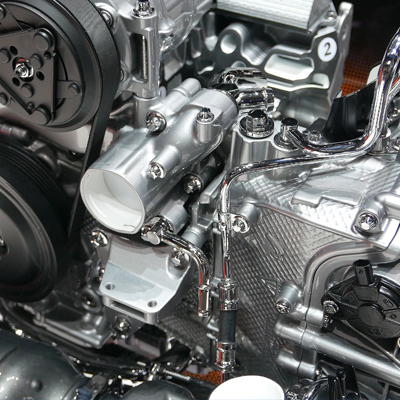The course aims to introduce tools and techniques that facilitate the digitalisation of maintenance activities of aircraft structures and improve existing approaches. The "smart hangar" concept is introduced that involves better analytical tools, advanced sensors in infrastructure, automation and robotics. The aim is to maintain the digital records to become the source of data analysis that can act as the baseline to compare future inspections and quantify the degradation rate.
At a glance
-
- Dates
-
- Please enquire for course dates
- DurationThree days
- LocationCranfield campus/Online
- Cost£1,000. The course fee includes refreshments and lunch during the day. Accommodation is not included and must be booked separately. Concessions available
Course structure
The course duration is three days and it will be delivered at Cranfield University and as 100% online delivery.What you will learn
The course gives a theoretical and methodological background for implementing automated systems inspection of aerospace structures. By using advanced imaging non-destructive testing (NDT) techniques, you will automatically and increasingly accurately identify defects and then by applying artificial intelligence (AI) – machine learning (ML) approaches, it would be feasible to make credible "fly/no-fly" decisions promptly and provide maintenance services with valuable information. In other words, the development of advanced diagnostic and monitoring of aircraft structures. Then various tools and techniques for the digitalisation of maintenance activities of aircraft structures in order to improve existing approaches are also introduced.
On successful completion, you should be able to understand the use of:
- NDT imaging approaches for damage detection
- Autonomous and efficient path planning for optimal remote structural inspection
- Self localisation and obstacle avoidance within complex environments
- Aerial and/or ground robotic manipulation for inspection and diagnostics
- AI – ML to automatically and increasingly accurately identify defects
- Maintenance planning and monitoring of structures
Core content
Topics covered by the course include:
- NDT imaging techniques for aircraft inspection
- Flight control and obstacle avoidance
- Localisation and mapping
- Damage detection, defect localisation, image processing and NDT assessment
- Digitalisation of maintenance data - digital MRO
- Use of AI for damage assessment and decision making
- Practical case study on an actual aircraft for automated – autonomous NDT inspection
Who should attend
This course is the best choice for those who are involved in the design and validation of automated and autonomous systems inspections using unmanned aerial vehicles (UAV) and/or unmanned ground vehicles. It is also suitable for those that work in the area of maintenance and operation.
Speakers
- Professor Nico Avdelidis (NDT, imaging diagnostics, digitalisation in maintenance)
- Dr Ip-Shing Fan (management of data, digital MRO)
- Mr Angelos Plastropoulos (UAVs, robotics, localisation, machine learning)
Concessions
20% discount for Cranfield alumni.
10% discount when registering three or more delegates from the same organisation at the same time.
Accommodation options and prices
This is a non-residential course. If you would like to book accommodation on campus, please contact Mitchell Hall or Cranfield Management Development Centre directly. Further information regarding our accommodation on campus can be found here.
Alternatively you may wish to make your own arrangements at a nearby hotel.
Location and travel
Cranfield University is situated in Bedfordshire close to the border with Buckinghamshire. The University is located almost midway between the towns of Bedford and Milton Keynes and is conveniently situated between junctions 13 and 14 of the M1.
London Luton, Stansted and Heathrow airports are 30, 90 and 90 minutes respectively by car, offering superb connections to and from just about anywhere in the world.
For further location and travel detailsLocation address
Cranfield University
College Road
Cranfield
Bedford
MK43 0AL
How to apply
To apply for this course please use the online application form.
Read our Professional development (CPD) booking conditions.

